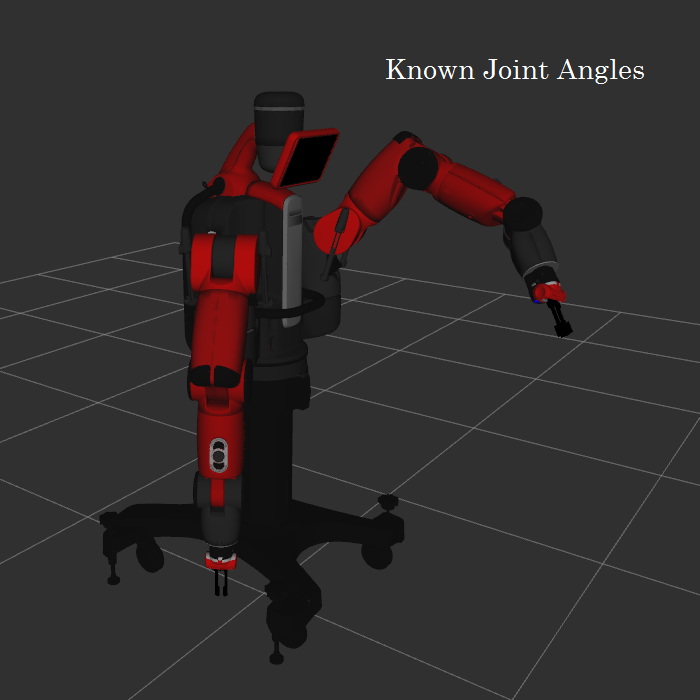Position Only Inverse Kinematics in Moveit
I want to perform inverse kinematics in Moveit of Baxter arm. Below are the requirements:
- Joint configuration for one pose is known
- For target state, only end-effector position (but not orientation) is known
(Pose 1) For this pose, the joint angles are known: 
(Pose 2) This is target pose. only end-effector position but not orientation is known: 
My questions are:
- Based on the known joint configuration, is it possible to perform inverse kinematics, when only end-effector position is known?
- In other words, I want to know the joint angles for Pose 2, knowing the joint angles for Pose 1.


